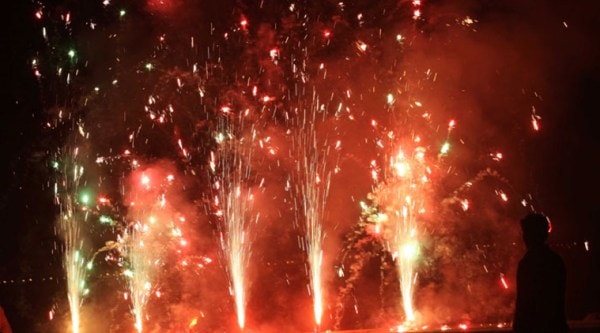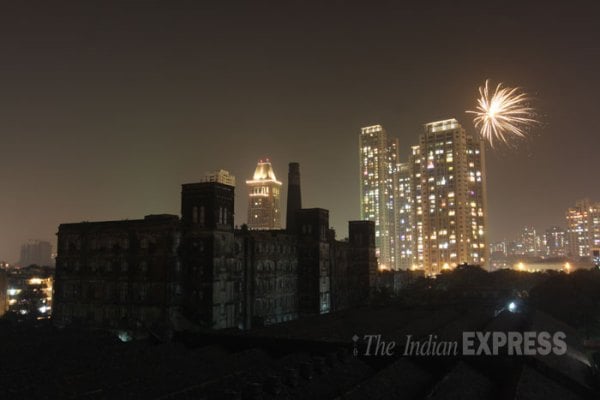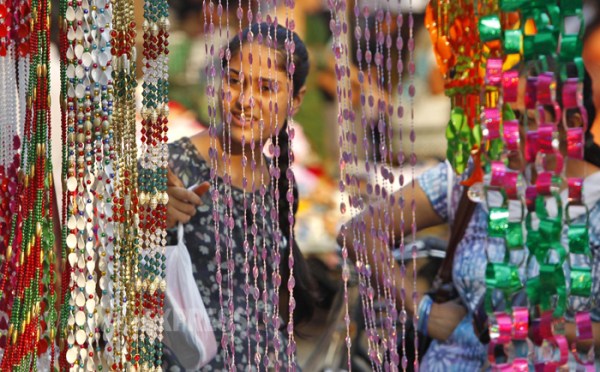Basic tips for shooting good pictures on Diwali
Here are a few tips to that perfect macro shot of a lamp or a long exposure shot of fireworks on Diwali.
 Here are a few tips to that perfect macro shot of a lamp or a long exposure shot of fireworks on Diwali.
Here are a few tips to that perfect macro shot of a lamp or a long exposure shot of fireworks on Diwali.
Unless you are a professional, most D-SLR owners take photography seriously only on certain occasions. Diwali is one such perfect occasion to unleash the photographer in you. So, it might be difficult to suddenly get that perfect macro shot of a lamp or a long exposure shot of fireworks on Diwali.
Here are a few tips from Adobe’s video editor and avid photographer Vipul Vaibhav and solution consultant Abhishek Mukherjee:
Five quick tips
Use a tripod stand to prevent shaky images.
Choose a low aperture of about f/8, to choose a slower shutter speed.
Use ‘flash compensation’ to keep the image evenly lit.
Use zoom lens for taking images from a distance.
For portraits, select wide aperture and fast shutter speed ensuring that the subject is not shaky.
For capturing Fireworks:
1) Handheld photos come out blurry as one needs lower shutter speed to capture firework in the dark sky. Use a steady tripod while using a shutter speed of around 1/20-1/60 seconds to prevent shaky images in the dark. Experiment with different shutter speeds.
 (IE Photo: Dilip Kagda)
(IE Photo: Dilip Kagda)
2) Frame the shot in advance. Analyse the area in the sky where fireworks are visible. As finding a focus is difficult in the night sky, it is advisable to shoot in manual focus. So, frame the shot using live-view (DSLR and a point and shoot) and manual focus (some lenses have “depth of field” scale which allows you can keep focus near infinity to have everything in focus).

3) In addition to manual focus, choose a low aperture of about f/8, which can let you choose a slower shutter speed.
4) Don’t be afraid to use ISO freely. Noise on an image can be easily removed while editing.
Shooting portraits:
1) Use a wide aperture of about f/1.8, for capturing people. Wider aperture gives interesting background results if there are lights and lamps behind the subject. For example, Bokeh shot is the most popular form of picture clicked during the Diwali festival.

2) ‘On camera flash’ can be used as a fill flash to keep the subject and the background well exposed. The setting ‘flash compensation’ allows you to increase/decrease the power of flash. Adjust it as you need, and if your subject comes out over-exposed, lower the value of flash compensation.
Taking candid images on the street:
1) Natural shots always look better. Zoom lens is the way to go for taking candid images from a distance so that you do not get too close to crackers.
2) A wider aperture can be used as more light needs to enter the sensor while keeping a fast shutter speed ensuring the subject is not shaky.

For most people, the entire photography things is over after clicking a shot. Very few consider to get them edited. So, if you are willing to invest some time to work on those perfect shot that you have captured, here are few tips on editing.
Post processing images using Adobe Photoshop and Lightroom
1) Lighten up the dark alleys or under exposed shots or specific regions of an image with Radial Filter in Lightroom 5 and Photoshop CC’s Camera Raw filter. You can also lighten up specific areas of an image.
2) Make the Diwali lights and surrounding look good by light-painting them with specific colors. The Adjustment brush in Lightroom 5 and Camera Raw in Photoshop CC will help you achieve the look with ease.
3) Use the Camera Shake Reduction filter to remove all camera shake from your pictures.
4) Click slightly over exposed image as it’s easier to retrieve details during post processing. Increasing the exposure of under-exposed images in Lightroom or Photoshop will result in better visibility of the items in your photo.
5) Always shoot RAW. RAW images have larger amount of light information compared to regular jpeg images. One can retrieve all the details from a RAW image while keeping the quality. Adjusting exposure, contrast, highlights and shadows slider will begin to give you better results.
6) Shooting in RAW will allow you to play with different white balance options in Lightroom. Select different white balance settings; play around with temperature slider to get the desired mood of the shot.
Got some better ideas or tips? Please feel free to share them on the comment section below.







